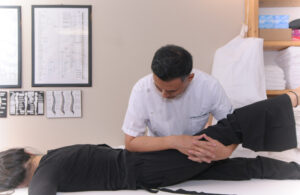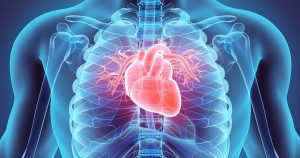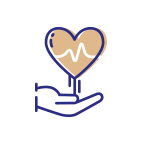Understanding how the temporomandibular joint works is crucial to healing temporomandibular joint dysfunction.
TMJ Dysfunction is extremely common because this is the only joint that hangs from the head and is influenced by all tensions/dysfunctions in the body.
What is a temporomandibular joint?
The temporomandibular joint is an articulation of the temporal bones and the mandible. Imagine a helmet chin strap: there are two temporal bones (one on either side of the cranium) and only one mandible connecting to either side. The natural movements of the joint are hinge open, hinge close, protrusion, retraction, and lateral deviation. TMJ pain is eliminated when these movements are achieved without restrictions.
What causes temporomandibular dysfunction?
According to the Mayo Clinic, the exact cause of a person’s TMJ disorder is often difficult to determine. Your pain may be due to a combination of factors, such as genetics, arthritis or jaw injury. Some people who have jaw pain also tend to clench or grind their teeth (bruxism), although many people habitually clench or grind their teeth and never develop TMJ disorders.
Some surprising causes for TMJD includes:
Stress: physical, emotional, chemical, environmental
Sleep disturbances
Core instability
Cranium/teeth asymmetry
Scoliosis (functional or structural)
Gut microbiome health
How does treatment work?
The most important muscular network to address is pterygoid muscles since they act as the myofascial bridge between the center and peripheral structure of the TMJ. Normalizing tensions of these muscles restores the position and mobility of the joint. Secondly, the masseter muscles play a vital role in the function of consuming and breaking down food. Relieving tightness in the masseter improves chewing and releasing digestive enzymes in the mouth – ultimately optimizing digestion. Lastly, the occipital bone is the mechanical driver of the temporal bones and mandible. Therefore, myofascial treatment of the cranial base makes all the difference in creating an adaptable and stable platform for the TMJ.
Global manual therapy takes away restrictions from other structures that may be pulling on the TMJ. Circulation and nutrients are free flowing once these barriers are removed. Increase in adequate global blood and lymphatic flow can reverse inflammatory processes and detoxify from damaged cells.
Your deep frontal line of fascia is a myofascial network that connects the entire length of your body from the jaw muscles, to the soles of the feet via neck, check, abdomen and pelvis. Strengthening your deep core muscles creates a biotensegrity, allowing the body to adapt to various forces in a general network. Without biotensegrity, the body continuously compensates by dumping unresolved tension into the structures that hang off the axial skeleton; such as the shoulders and jaw. Overall, the goal of a therapeutic approach to TMJ is reposition, restore mobility, increase circulation, and strengthen the foundation using myofunctional and deep core exercises.










